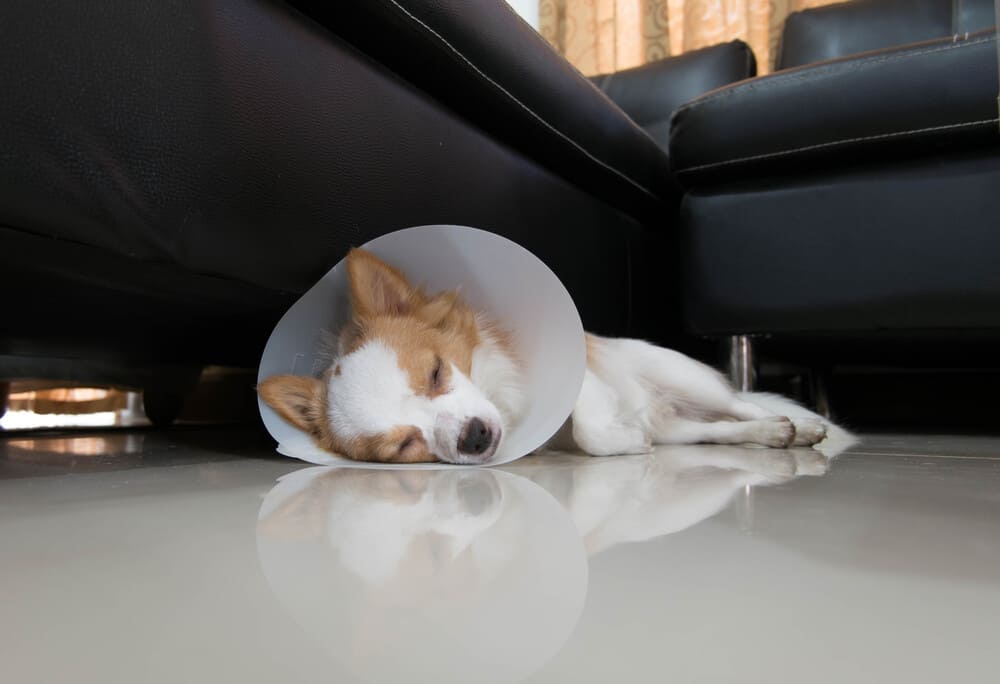
Initial Physical Examination Before the Dog Spay Procedure
Before the scheduled day of the dog spay surgery, a physical exam is necessary to evaluate a patient’s overall health. During this appointment, a head-to-toe assessment will be completed by the doctor.
Complicating factors such as estrus (heat) or pregnancy are discussed at this time. Any issues your dog is having should be investigated and treated before the procedure.
We will conduct pre-anesthetic blood work to evaluate kidney and liver function and assess red blood cell count and hydration status. If bloodwork is normal, the surgery is scheduled within two months.
Night Before and Morning Drop-Off
- Your dog will require overnight fasting, and no food should be consumed by your dog after 10:00 pm the night before the dog spay surgery. Water up to the morning of surgery is permissible.
- Dogs are admitted to our clinic between 7:45 am and 8:30 am.
- Your dog will receive another physical examination, blood work results will be reviewed, and an individualized anesthetic protocol will be formulated for each dog.
Anesthesia for the Dog Spay Surgery
Your dog will be sedated and then anesthetized with a combination of anesthetic drugs and anesthetic gas (Isoflurane). An intravenous catheter is placed, allowing for constant administration of intravenous fluids. Pain medications and additional sedatives are given as needed for the procedure.
An endotracheal tube is placed to allow for the delivery of a constant supply of oxygen and anesthetic gas. A nurse anesthetist will continuously monitor your dog’s heart rate, ECG, oxygen levels, and blood pressure.
Recovery at Longwood Vet
Your dog is monitored closely by a nurse as they are recovering from the anesthetic. Your dog will receive continued monitoring, vital checks, IV fluids, and further pain medication as needed until they are discharged.
A nurse will discuss aftercare instructions with you before discharging your dog on the evening of the surgery. Nurses will call to check on you the next day.
At-Home Dog Spay Recovery
Your dog will be tired and slightly disoriented after the procedure. They should be confined to a small area without stairs and kept away from other animals or children until feeling normal. Feed a small meal the evening of the procedure. Regular meals can restart the next day. Limit activity for five days immediately post-op with no bathing or swimming for 14 days.
Incision Care: check the incision daily for 14 days. Mild redness or swelling is expected. Excessive pain, drainage from the incision, or an opening of the incision is not normal, and we should be notified immediately.
Pain Medication should be given as directed by your veterinarian. Either an E-Collar or special over shirt must be worn for the first ten days after the dog spay procedure. Do not allow your dog to lick, chew, or rub the incision, as infection will occur. External sutures are not usually present. Some dogs experience diarrhea or constipation after general anesthesia. This normally resolves on its own. If the condition does not resolve in 48 hrs or is accompanied by vomiting, lethargy, or anorexia, notify us.
Spaying, while a common procedure, is major surgery. As you can see, there are many steps involved in a successful outcome. Keeping your dog safe and minimizing her discomfort is extremely important to us. We take no shortcuts and work as a team to meet this goal.
